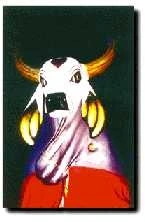PARINTINS
Parintins city was founded in 1793. Its people present an artistic expression recognized worldwide due to their folklore festival. The city has a population of more than 100,000 people in an area of 7.069 km². It is situated on the right riverbank of Amazonas River on Tupinambarana Island.
The relief of area consists of flood plains and highlands (covered by forests), lakes, islands, and a small ridge mountain that sets the border between Amazonas and Pará states.
Parintins is situated 420 km from Manaus, the most used transportation way by the local population is regional boats by river with accommodations in hammocks, cabins or suites. The trip on the Amazonas River from Manaus takes 15 hours going downstream (Manaus-Parintins) and 27 hours going upstream (Parintins-Manaus). While by plane, the trip takes 1 hour.
 The Parintins Mountain Ridge is 152 meters high and surrounded by luxurious dense vegetation rich in fauna and flora. The beautiful Valéria Lake situated alongside the mountain is considered as the entrance door to ecological tourism in Amazonas state.
The Parintins Mountain Ridge is 152 meters high and surrounded by luxurious dense vegetation rich in fauna and flora. The beautiful Valéria Lake situated alongside the mountain is considered as the entrance door to ecological tourism in Amazonas state.
Uaicurapá River has receding water period from July through February, when beautiful river beaches appear with white sand and dark waters. Close by, the tourist can enjoy the islands of the Pacoval (banana plantation), the Onças (jaguars) and the Guaribas (howler monkeys).
The Folklore Festival is considered the largest cultural manifestation in Brazil. From June 12th, the June's celebrations begin with presentation of Folkloric Groups in school yards, Cultural and Spots Arena. The Parintins Cultural Arena, called "Bumbódromo", was built in the shape of a bull's head with a seating capacity of 35,000 spectators.
The typical dances like "Quadrilhas", "Cordões de Pássaros", "Xaxados", and stylized "Bois-Bumbás" arrived here via migration movement from the Northeast of Brazil. The competition of "Bois de Parintins" occurs at the last weekend of June (use to be on June, 25th) with a dispute between "Bois-Bumbás" Caprichoso and Garantido. Which, here in the North, take on their own characteristics with indigenous culture.
PARINTI NS FESTIVAL
June 28th, 29th, and 30th were exclusively dedicated to the presentations of the two rivals "Bois-Bumbás". since 2005 the festival happens in the last weekend of the month of June, from Friday to Sunday. It is the economical aspect overriding the tradition, which in someone’s understanding will attract more people and money.
The CAPRICHOSO and GARANTIDO bumbás perform for six hours every night an authentic Amazon ritual. The figures of Father Francisco, Mother Catarina, Tribal chieftains, Cunhã Poranga (pretty young girl), shamans and their innumerous tribes talk about, legends indigenous rituals. People dance in cycles along with the sound of the chants and "palminha" instrument to the indigenous rhythm of cateretê, to the beat of carimbó (a hollow log drum) and to the marches.
 The
cheering sections decorate their strongholds with much
creativity in order to complete the unforgettable show.
The "Bois-Bumbás" enters celebrated by fireworks and the war cry from the audience echoes in the face at the silence of the opposite
cheering section.
The
cheering sections decorate their strongholds with much
creativity in order to complete the unforgettable show.
The "Bois-Bumbás" enters celebrated by fireworks and the war cry from the audience echoes in the face at the silence of the opposite
cheering section.
Language Festival
Alvorada
- A festivity that takes place in the city streets at dawn that announces the beginning of an event.
Arraial - Fair of typical dishes and social-cultural activities.
Contrário - Means opposite. It is the name given to fans of the opposing "Bois-Bumbá" avoiding to use the name of the Bumbá.
Cunhã Poranga - A pretty girl.
Curral - the location where "Bois-Bumbás" rehearsals occur.
Figura - A character of "Bois-Bumbás". For example: Bicho Folharal, dona Aurora, Neguinho do Campo Grande, ...
Galera - Cheering section.
Marujada de Guerra - The name given to the rhythm section of the "Bois-Bumbá" Caprichoso.
Palminha - Two pieces of rectangular wood (itaúba-laurel wood or sucupira wood) used to beat the rhythm of the
chants.
QG - The place where the costumes are made.
Toada - Music.
Tripa - The person inside the "Boi" figure.